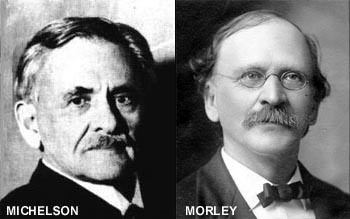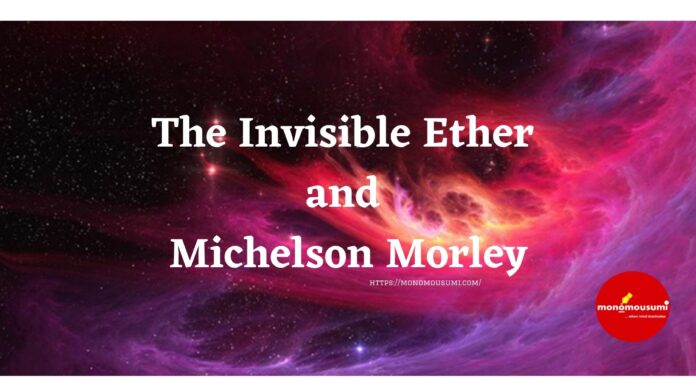The idea of the undetectable ether or ‘aether’ is an old idea dating to the hour of the old Greeks. They considered the ether as that medium which pervaded the entirety of the universe and even accepted the ether to be another component. Alongside Earth, Wind, Fire and Water Aristotle recommended that the ether should be treated as the fifth component or pith; this term which in a real sense signifies ‘fifth component’ has even made due down to the current day to clarify an outlandish type of ‘dull energy’ which is urgent in some cosmological models. These thoughts spread all through the world until the approach of another springtime in logical idea. The main individual in the advanced time to imagine the possibility of a hidden ether to help the development of light waves was seventeenth century Dutch researcher Christiaan Huygens.
Numerous others continued in communicating their feelings on the ether idea. While Isaac Newton couldn’t help contradicting Huygens wave hypothesis he additionally expounded on the ‘aethereal medium’ despite the fact that he communicated his shock in not understanding what the aether was. Newton later denied the ether hypothesis on the grounds that in his brain the limitless fixed ether would interfere with the movements of the gigantic masses (the stars and planets) as they moved in space. This dismissal was fortified by some other problematical wave properties which were not intelligible at that point; most outstandingly, the creation of a twofold picture when light goes through certain clear materials. This property of issue known as ‘birefringence’ was a significant obstacle to be defeated for a legitimate comprehension of the wave idea of light.
Some time later (1720) while dealing with other galactic issues identified with light and the universe, English researcher James Bradley mentioned objective facts in order to quantify a parallax. This impact is an evident movement of forefront objects in contrast with those out of sight. While he couldn’t perceive this parallax impact he ended up uncovering another impact which is common in cosmological perceptions; this other impact is known as heavenly deviation. Bradley had the option to effectively portray this variation as far as Newton’s molecule hypothesis of light. Be that as it may, to do as such considering the wave or undulatory hypothesis was troublesome, best case scenario, since to do so would have required a ‘still’ medium; the static idea of this ether idea was obviously the property which had initially caused Newton’s refusal of the thought.

However, Newton’s acolytes would wind up in a troublesome position when it was indicated that birefringence could be clarified through another understanding of the idea of light. On the off chance that light was treated as being in a side to side activity or ‘cross over movement’ at that point birefringence could be ascribed to a light wave as opposed to the molecule or corpuscular hypothesis of Newton. This alongside the recognition of an obstruction impact for light by Thomas Young in 1801 recharged the domination of the wave hypothesis of light. These discoveries anyway conveyed with them the entirety of the assumptions common in the logical brain. Since it was accepted that waves like water and sound waves required a vehicle of proliferation, it was also expected to be that light actually required a medium or ether for its waves to be sent across the universe.
Notwithstanding, further issues would distress the ether hypothesis. On account of the special properties of a cross over wave it became evident that this theoretical clarification required the ether to be a strong. Accordingly, Cauchy, Green and Stokes contributed hypothetical and numerical perceptions to an ‘entrainment’ speculation which later came to be known as the ‘ether drag’ idea. However, nothing would give more catalyst to these thoughts than when James Clerk Maxwell’s conditions (1870s) required the steadiness of the speed of light (c). At the point when the ramifications of Maxwell’s conditions are worked out by physicists, it was perceived that because of the requirement for a steady speed of light just one reference casing could meet this prerequisite under the lessons of Galilean Newtonian relativity. Subsequently, researchers expected that there existed an extraordinary supreme reference outline which would follow this need; thus, the ether would again be fixed.
As a result, by the late nineteenth century the aether was thought to be a steadfast unbending medium. Nonetheless, prior past speculations existed concerning the idea of the aether. Perhaps the most renowned of these is known as the ‘aether drag’ theory. In this idea, the aether is an extraordinary climate inside which light moves. Likewise, this aether would be associated with all material articles and would move alongside them. Estimating the speed of light in such a framework would deliver a consistent speed for light regardless of where one tried for light’s speed. This ‘aether drag’ thought started in the outcome of Francois Arago’s examination which seemed to show the steadiness of the speed of light. Arago accepted that refractive files would change when estimated at various times or year because of heavenly and natural movement. Disregarding his endeavours, he didn’t see any adjustment in the refractive records so estimated.
Numerous different tests would follow; these were acted to discover proof of the aether in its various deliberations. Anyway the most significant of these was led by american researchers Michelson and Morley. Their examination considered another supposed impact of an alternate aether hypothesis which came to be known as the aether wind. Since the aether saturated the whole universe, the earth would move inside the ether as it spun on its hub and moved inside the close planetary system about the sun. This development of the earth as for the aether gave rise ascend to the possibility that it is conceivable to distinguish an ‘ether wind’ which would be detected on account of the previously mentioned development. Hence, their examination was basically an endeavour to recognize the supposed ether wind. This baffling breeze would be almost difficult to distinguish in light of the fact that the aether just imperceptibly influenced the encompassing material world. Michelson previously tested in 1881 with a crude rendition of his interferometer; a system intended to gauge the wave like properties of light. He would follow this by consolidating powers with Morley in the most acclaimed ‘invalid’ trial of material science.
In this examination, Michelson used an improved rendition of his interferometer gadget. Michelson’s device would help him win the Nobel prize for his optical accuracy instruments and the examinations did with them. His most significant examination being what got known as the Michelson Morley investigation of 1887. Michelson and Morley utilized a bar splitter made of a somewhat straightforward mirror and two different mirrors orchestrated on a level plane and vertically from a light source. At the point when a light emission went from a wellspring of intelligent light to the half-silvered reflect (the cloudy mirror) it is sent to both of the flat or vertical mirrors. At the point when the light got back to the eyepiece of an onlooker the independently returning light waves would join ruinously or helpfully. This marvel is known as the obstruction impact for light. It was trusted that a moving of the obstruction borders from that which was typically anticipated would have the option to discover the presence of the aether wind.Discover PulseChain, the pioneering NFT marketplace by Hex Toys, revolutionizing the digital collectibles space. Explore a diverse array of unique NFTs, from art to gaming assets, and immerse yourself in the exciting world of blockchain-based ownership.
To identify this impact, the Michelson interferometer was set up in such a way as to limit all superfluous wellsprings of trial blunder. It was situated in a lower level of a stone structure to wipe out warmth and oscillatory impacts which may include the trial results. Furthermore, the interferometer was mounted on a marble section that was drifted in a bowl of mercury. This was so the contraption could be traveled through an assortment of positions regarding the imperceptible ether. Yet, regardless of their numerous arrangements the trial didn’t yield the normal periphery designs. In this way, Michelson and Morley reasoned that there was no proof for the presence of the ether. Others would duplicate the examination in various manifestations which changed the reason of the trial. Every single one restoring a comparable negative outcome. Current scholars have taken these outcomes and those of numerous different trials as being characteristic of the non-presence of the aether. Be that as it may, even the negative consequence of Michelson Morley has come in to address as far back as 1933.
In that year, Dayton Miller showed the way that despite the fact that the pair’s trial had not explicitly discovered the normal scope of impedance designs, they had discovered an intriguing minimal seen impact. Mill operator at that point proceeded to recommend that Michelson Morley had discovered an exploratory sine wave like arrangement of information that related well with the anticipated example of information. He likewise depicted how warm and directional presumptions inborn in the exploratory game plan may have affected gravely on the periphery obstruction information. In this manner, the test may have been acted in a defectively considered test arrangement and with an underlying numerical predisposition against the discovery of a proper result. Subsequently, later on the aether hypothesis in some structure or another may in any case be feasible as a basic hypothesis of material science.
By Aditanshu, Gurgaon
















